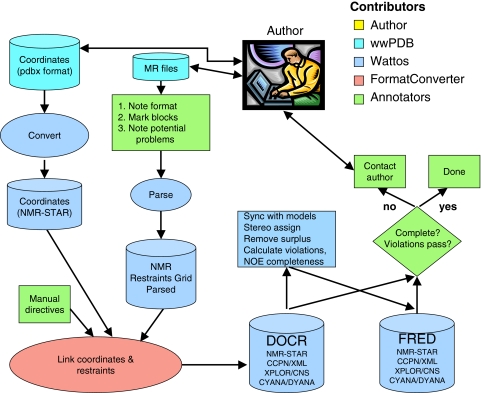Fig. 1.
Data flow chart showing the software tools involved in the project, Wattos and FormatConverter, and the semi-automated steps carried out by BMRB annotators. The coordinate data comes from the Worldwide Protein Data Bank (wwPDB) in an mmCIF formatted file that adheres to the PDB eXchange dictionary (pdbx). These coordinates and the restraint data file are converted to NMR-STAR and combined into a single file by Wattos. The FormatConverter then matches the two pieces of information and converts the data from NMR-STAR to CCPN, XPLOR, and CYANA formats for the Database of Converted Restraints (DOCR). Only for the Filtered REstraints Database (FRED) are the data interpreted to be consistent with the ensemble, without surplus (see text), and have the best matching stereospecificity. In order to assess whether the data are complete and well converted, the distance restraints are checked for violations and NOE completeness. Authors are only contacted for about 10% of the entries to resolve outstanding issues. BMRB never updates the original wwPDB Magnetic Resonance (MR) input restraints, but requests that the other wwPDB deposition sites do so after which BMRB processing is iterated on the updated data sets

